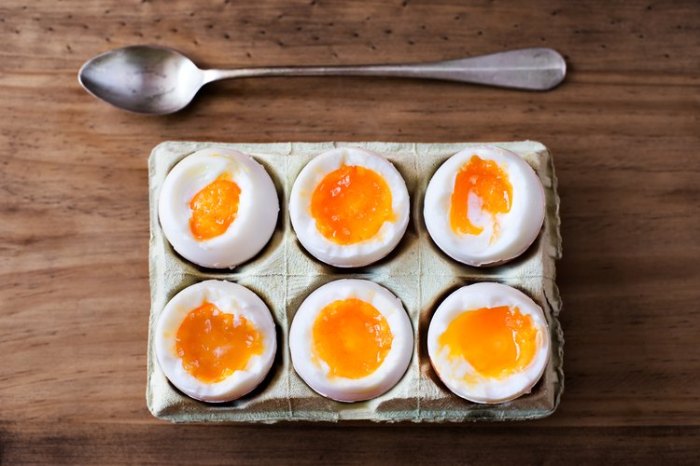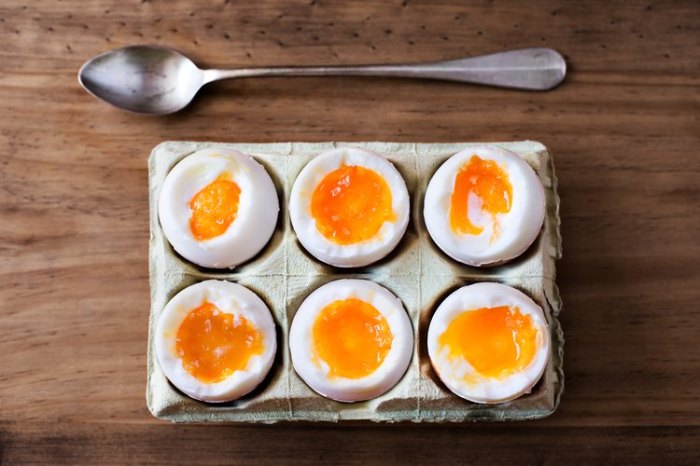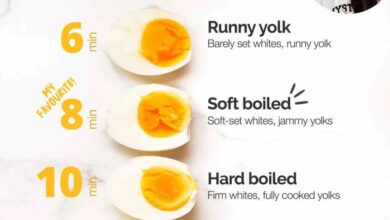
Soft Boiled Eggs in the Microwave: A Quick and Easy Guide
Soft boiled eggs in the microwave? It might sound strange, but trust me, it’s a game-changer! This simple technique lets you whip up perfectly cooked eggs in minutes, without the hassle of a stovetop. Forget about the dreaded green ring and inconsistent results – with a few tricks, you can enjoy creamy, perfectly cooked yolks every time.
The science behind it is fascinating: microwaves heat the water molecules in the egg, causing them to vibrate and generate heat. This heat cooks the egg from the inside out, resulting in a soft, creamy texture. It’s a different process than stovetop cooking, where heat is applied from the outside in.
The Science Behind Microwave Soft Boiled Eggs
Microwaving soft boiled eggs might seem like a simple feat, but there’s a fascinating science at play that determines the perfect consistency. Understanding the process of heat transfer and how microwaves interact with the egg’s structure is key to achieving that ideal soft yolk and set white.
Microwave Heat Transfer
Microwave ovens work by using electromagnetic radiation to heat food. This radiation is absorbed by water molecules in the food, causing them to vibrate rapidly and generate heat. The heat then spreads throughout the food through conduction, convection, and radiation.
Microwave Effects on Egg Structure
Microwaves primarily target the water molecules in the egg. As the water molecules absorb energy and vibrate, they generate heat. This heat causes the egg white to solidify, forming a set white around the yolk. However, the yolk, being mostly fat, absorbs less microwave energy.
This leads to a slower heating process for the yolk, resulting in the desired soft texture.
Comparison to Stovetop Methods
The cooking process of microwave soft boiled eggs differs significantly from traditional stovetop methods. Stovetop methods involve heating the water first, and then the egg is immersed in the hot water. This allows for a more even distribution of heat throughout the egg.
Microwaving, on the other hand, focuses heat directly on the egg, leading to a faster cooking time. This faster cooking time can sometimes lead to uneven heating, especially if the egg is not positioned correctly in the microwave.
Sometimes, I crave a simple breakfast of soft-boiled eggs, perfectly cooked in the microwave. But then, the aroma of sizzling garlic and shrimp wafts from the kitchen, and my stomach starts singing a different tune. I can’t resist the allure of spanish garlic shrimp gambas al ajillo , a dish that transforms a simple meal into a culinary adventure.
After all, a little indulgence is always worth it, even if it means postponing my soft-boiled eggs for a bit longer.
Microwave Soft Boiled Egg Techniques: Soft Boiled Eggs In The Microwave
Cooking soft boiled eggs in the microwave offers a quick and convenient alternative to traditional stovetop methods. While the microwave’s heating mechanism differs from stovetop cooking, mastering a few techniques can lead to perfectly cooked soft boiled eggs.
I’ve always been a fan of soft boiled eggs, especially when cooked in the microwave. It’s such a quick and easy way to get that perfect runny yolk. Speaking of perfect, I recently discovered the magic of sous vide cold brew coffee , and it’s a game-changer for coffee lovers.
The precision and control of the sous vide method really elevate the flavor. Now, I’m wondering if I can apply the same principles to my microwave-cooked eggs. Maybe I can create the ultimate soft boiled egg, perfectly cooked every time.
Microwave Soft Boiled Egg Cooking Techniques
Microwave cooking times vary depending on the wattage of your microwave and the size of the eggs. Therefore, it’s crucial to start with a shorter cooking time and gradually increase it as needed. This allows you to achieve the desired level of doneness without overcooking the eggs.
Sometimes, when I’m in a hurry, I’ll whip up a quick soft boiled egg in the microwave. But honestly, the real star of my kitchen is my go-to recipe for pork rub rubbed and baked pork chops , which I always pair with a side of roasted vegetables.
Those pork chops are so flavorful and juicy, they make even the simplest microwave egg feel like a gourmet meal.
Cooking Time Guidelines
- Small eggs (50-55 grams):45-60 seconds
- Medium eggs (55-60 grams):1-1.5 minutes
- Large eggs (60-65 grams):1.5-2 minutes
Techniques for Achieving Different Levels of Doneness
- Soft Boiled:For a runny yolk, cook for the minimum time specified in the guidelines.
- Medium Boiled:For a slightly firmer yolk, increase the cooking time by 15-30 seconds.
- Hard Boiled:For a fully cooked yolk, increase the cooking time by 45-60 seconds.
Tips for Preventing Overcooking and Achieving Consistent Results
- Use a Microwave-Safe Bowl:A deep bowl with a lid will help to contain the steam and prevent the eggs from splattering.
- Add Water:Adding a small amount of water to the bowl will help to create steam and ensure even cooking.
- Pierce the Eggs:Before cooking, pierce the eggs with a toothpick or sharp knife to allow steam to escape and prevent the eggs from exploding.
- Monitor Cooking Time:Check the eggs regularly during cooking to prevent overcooking.
- Rest Before Peeling:After cooking, allow the eggs to rest for a few minutes before peeling. This will help to prevent the whites from sticking to the shell.
Equipment and Tools
The right equipment is essential for successfully cooking soft-boiled eggs in the microwave. While microwaving eggs might seem simple, choosing the right container can significantly impact the outcome. Different containers have varying heat distribution and retention properties, affecting the cooking process and the final texture of your eggs.
Microwave-Safe Containers for Cooking Eggs
Choosing the right container is crucial for achieving the desired soft-boiled egg consistency. Here’s a comparison of common microwave-safe containers, highlighting their pros and cons:
| Container Type | Pros | Cons |
|---|---|---|
| Ceramic Bowls |
|
|
| Glass Bowls |
|
|
| Silicone Cups |
|
|
| Plastic Containers |
|
|
Container Size and Shape
The size and shape of the container influence the cooking time and the consistency of your eggs.
Smaller containersheat faster and can result in overcooked eggs if not monitored closely. Larger containerstake longer to heat but offer more space for the eggs to cook evenly.
Round containersare ideal for achieving a consistent cook, as the eggs rotate naturally during cooking. Square or rectangular containersmay result in uneven cooking, with the corners cooking faster than the center.
Variations and Flavor Enhancements

Microwave soft boiled eggs are a versatile breakfast or snack option that can be customized to your liking. While the basic method is simple, you can elevate the flavor and experience by adding different spices, herbs, and sauces.
Flavor Combinations for Microwave Soft Boiled Eggs, Soft boiled eggs in the microwave
The simplicity of a soft boiled egg allows for a wide range of flavor combinations. Here are a few ideas to inspire your culinary creativity:
- Classic with a Twist:A pinch of salt and black pepper, a sprinkle of paprika, or a dash of cayenne pepper can enhance the natural flavor of the egg.
- Herby Delight:Fresh herbs like chives, parsley, dill, or cilantro can add a bright and aromatic touch.
- Spicy Kick:Add a touch of heat with a sprinkle of chili flakes, sriracha, or a dollop of hot sauce.
- Savory Surprise:Experiment with flavorful spices like cumin, turmeric, or garlic powder.
- Asian Inspired:Soy sauce, sesame oil, and a sprinkle of sesame seeds can add a delicious Asian flair.
Recipes for Enhanced Soft Boiled Eggs
Here are some recipes to help you create delicious and flavorful microwave soft boiled eggs:
Spiced Soft Boiled Eggs
- Ingredients:1 egg, 1/4 teaspoon salt, 1/4 teaspoon black pepper, 1/8 teaspoon paprika, 1/8 teaspoon cayenne pepper
- Instructions:Crack the egg into a microwave-safe bowl. Add salt, pepper, paprika, and cayenne pepper. Microwave for 45-60 seconds, or until the egg white is set and the yolk is still runny.
Herbed Soft Boiled Eggs
- Ingredients:1 egg, 1 tablespoon chopped fresh herbs (such as chives, parsley, dill, or cilantro)
- Instructions:Crack the egg into a microwave-safe bowl. Add the chopped herbs. Microwave for 45-60 seconds, or until the egg white is set and the yolk is still runny.
Spicy Soft Boiled Eggs
- Ingredients:1 egg, 1/4 teaspoon chili flakes, 1/4 teaspoon sriracha, or a dollop of hot sauce.
- Instructions:Crack the egg into a microwave-safe bowl. Add the chili flakes, sriracha, or hot sauce. Microwave for 45-60 seconds, or until the egg white is set and the yolk is still runny.
Incorporating Soft Boiled Eggs into Dishes
Soft boiled eggs are a versatile ingredient that can be incorporated into various dishes:
- Breakfast Bowls:Add a soft boiled egg to your breakfast bowl for a protein boost and creamy texture. Combine it with avocado, spinach, and a drizzle of balsamic vinegar.
- Salads:Soft boiled eggs add a satisfying protein element and creamy texture to salads. Try them in a classic Caesar salad or a more adventurous salad with roasted vegetables.
- Sandwiches:Slice a soft boiled egg in half and add it to your favorite sandwich for a creamy and flavorful filling. Consider a classic egg salad sandwich or a more adventurous combination with smoked salmon and cream cheese.
- Soups:Add a soft boiled egg to your favorite soup for a hearty and flavorful meal. Try it in a tomato soup or a creamy vegetable soup.
- Appetizers:Soft boiled eggs can be served as a simple and elegant appetizer. Deviled eggs are a classic option, or try a more modern approach with a creamy avocado and lime dressing.
Safety Considerations
Cooking eggs in the microwave offers convenience, but it’s essential to prioritize safety to prevent potential hazards. Microwaving eggs can lead to uneven heating, resulting in an explosion, and improper handling of hot eggs can cause burns.
Using Microwave-Safe Containers
It is crucial to use microwave-safe containers designed for high heat. These containers are typically made of materials like glass, ceramic, or heat-resistant plastic that can withstand the high temperatures generated during microwaving. Avoid using metal containers, as they can spark and cause damage to the microwave.
Glass containers with a small vent hole are ideal for microwaving eggs, allowing steam to escape and preventing pressure buildup.






